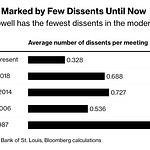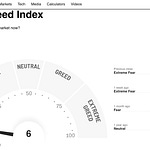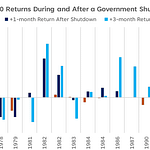To investors,
I have been reading one book per week this year. This past week’s book was The Great CEO Within: The Tactical Guide to Company Building by Matt Mochary. Highly recommend reading it. If you are interested in the individual highlights that I made in the physical book, you can read those here. Hope you enjoy these notes every Monday morning.
Book’s main argument:
Matt Mochary is one of the best executive coaches in the world. After repeating the same advice to his various clients, Matt decided to write everything down in this book. It is a practical guide on how to run a startup, including hiring/firing, internal operations, fundraising, and building company culture. The book is relatively short but full of insight.
5 Big Ideas:
💡 Idea #1 — Companies are intended to solve customer problems. This can be easily forgotten by founders, so it is important to remember why companies exist — and especially why great companies thrive. Matt writes:
“There are many reasons to create a company, but only one good one: to deeply understand real customers (living humans!) and their problem, and then solve that problem.”
The company is not a sterile organization though. It is made up of people.
“Great companies are made up of great individual performers who work well together as a team.”
A great way to increase the performance of your individual team members is to increase the odds they are having fun. Show them appreciation to make them feel good about themselves. Matt writes:
“It turns out that we perform our best when we are having fun and feeling good about ourselves.”
💡 Idea #2 — You have to conduct an energy audit. If you are spending time on things that steal your energy, rather than add to it, you are setting yourself up for disaster. Matt explains the importance of this idea:
“It is important to maximize your energy. You perform best when you are doing things that energize you. Your goal should be to spend most of your time (75-80 percent) doing things that energize you. If you do, magic will occur.”
He suggests you conduct the energy audit by doing the following:
“Print out the last week of your calendar when you were working. Go through each workday hour by hour and ask yourself, “Did that activity give me energy or drain my energy?” Highlight in green those that gave you energy, and highlight in red those that drained your energy. There are no neutrals; every hour must be marked one color or the other.”
This can be incredibly powerful for the whole organization to constantly conduct as well.
“Energy audits are the single most powerful tool I know for creating joy and engagement in the workplace.”
💡 Idea #3 — Clear your inbox so you can be as productive as possible. Matt is very focused on achieving inbox zero. He explains the importance:
“Think of your combined inboxes as a single triage room at a hospital. Some cases that come in are urgent, others not so much. It is critical to notice the urgent cases immediately and get them in to see a doctor now. To do so, you must keep the triage room clear.”
“This means addressing all the urgent cases right away and maintaining Inbox Zero every day.”
“If you check your email incessantly, multiple times an hour, you are wasting hours of productivity. Instead, batch your time and clean out your entire inbox at those times.”
Productivity can also be gained by being on time and fully present in meetings. Matt suggests:
“In addition to being on time, you must also be present.”
“I recommend scheduling 25 and 50 minute meetings only. This will give you 5 minutes each half hour and 10 minutes each hour to maintain yourself.”
“During every meeting, leave your phone in your pocket or facedown.”
💡 Idea #4 — You can not build a great company by yourself, so you must create a well-run organization. This relies on a set of systems that increases efficiency and productivity of the group. Matt writes:
“No matter how original and innovative your ideas might be, and no matter how efficient and productive your own habits might be, you won’t be able to build a truly exceptional organization alone. Your company’s success depends on how well its members work together. Just as individuals develop habits, so do groups. And just as with individuals, it’s much easier to start off with good group habits rather than have to change bad group habits down the line.”
A great way to make decisions within an organization is known as the RAPID decision-making process.
RAPID Decision-making: Someone identifies an issue or decision that needs to be made. They prepare a write-up with the following details:
The issue
The proposed solution
The list of people needed to make and implement the decision:
R (Recommend): The one who first proposed the issue and solution
A (Agree): Those people whose input must be incorporated in the decision
P (Perform): Those people who will have to enact any decision and therefore should be heard
I (Input): Senior people within the company whose departments and processes will be affected by the decision and therefore should be heard
D (Decide): The one who will make the decision
Reversible decision is made by someone other than CEO, irreversible decision is made by CEO
You can also incorporate impeccable agreements into your organization. This can have a profound impact because it creates cohesion on tasks and actions.
“A very common cause of inefficiency in startups is sloppy agreements. People don’t show up to meetings on time, and they don’t complete the goals that they declare. The result is a spreading virus of unproductiveness and decreased morale.”
“The antidote for this is simple: impeccable agreements. These are (a) precisely defined and (b) fully agreed to by all relevant people (which almost always means written).”
“An impeccable agreement should be written down in a location that is easily accessible by all participants.”
💡 Idea #5 — Do good in the world once you have the financial resources to do so. Matt ends the book with the following paragraph:
“This book is intended to give you the roadmap to turn your company into a massive financial success. If it does, treat yourself: Go have fun, and lots of it. Until you don’t want to have fun anymore. And when that moment arrives, I ask that you take one more step: do good in the world. By this, I don’t mean write checks to pleasant-sounding charities. I mean get your hands dirty. You already know how to do this. When you first started your company, you discovered your customers’ pains and then figured out the least costly and most scalable solutions to those pain points. Now do it again, but this time with the least noticed people in your community (likely the poorest and most marginalized). There will be no financial payoff if you do. You likely will get no praise or thanks. But you will have made a truly positive contribution to the world. And you will know it. When you do, you will experience the rarest and most exquisite of feelings: the satisfaction of a life well lived. That is the true gift that I want to give you!”
Memorable quotes:
The greatest risk of a startup is not that they moved too slowly in dominating the entire marketplace, but rather that they spread their scarce resources too thin and ended up securing few or no customers at all.
“Aaron Ross’s most important insight is this: Most executives think that the way to grow revenue is by adding salespeople. However, most often the main obstacle to growth is not growing the team but generating more leads. Only once you achieve predictable revenue can you achieve true scale.” – Misha Talavera
Selling happens throughout the recruiting process.
Without an effective meeting lead, meetings quickly become inefficient and people come to resent them.
It is critical that the voice of the customer remain strong within the company.
When product-market fit is achieved, it is time to scale rapidly.
It is critical to objectively measure the performance of the company. You can only manage what you can measure.
A well-run company has no single point of failure.
Company culture is important because it affects how team members interact with one another and with customers.
Remember that you are not making a product — you are solving a customer problem.
Pomp’s Takeaways:
This is the most practical book that I have read on running a startup. I try to read it once or twice a year to keep the ideas top of mind. It is less than 200 pages so you can read it in a day or two.
My first big takeaway is how many problems in startups can be solved by simply understanding the basics of operational efficiency. Matt says “learning how to run a company while running a company is extremely hard.” This is definitely true, but you can eliminate a lot of pain and inefficiency by implementing the various rules and guidelines (ex: how to run meetings, how to structure an organization, etc) contained in the book.
My second big takeaway is how important the quality of the people in an organization is. Vinod Khosla is famous for saying “the team you build is the company you build.” This increases the importance on your organization’s ability to find, recruit, and retain high-quality talent. A+ players want to work with other A+ players. They also want to work in demanding environments that have high standards and a common mission. Create those conditions and you have a chance of attracting the right people.
My third big takeaway is how easy it is to forget that a company’s purpose is to solve customer problems. There are plenty of shiny things that can distract founders and teams from this simple concept. If you are not solving a real, painful problem for your customers, you are likely to be out of business eventually. The popular “product-market fit” framework can be restated as “actually solving a customer’s real problem.” Do that and you will find that many other aspects of building a business becomes easier.
My final big takeaway comes from an appendix section of the book. Matt describes his answer to the age-old question of whether you should take your company public or keep it private. He ends his commentary with the following:
“Instead of giving in to all the voices around you (particularly from your institutional venture investors) who want you to go public, consider staying private. Capital is abundant in this world. Operational freedom, once lost, is very difficult to regain.”
As the economic environment changes, the narrative around staying private or going public will change. You have to truly ask yourself what you are optimizing for. There is no right answer, but too few people take the time to really think about how important operational freedom is to them. Don’t make that mistake.
As I mentioned, this past week’s book was The Great CEO Within: The Tactical Guide to Company Building by Matt Mochary. Highly recommend reading it. If you are interested in the individual highlights that I made in the physical book, you can read those here. Hope you enjoy these notes. Feel free to leave a comment - I read all of them.
-Pomp
Note: Make sure you are subscribed to receive these personal notes each Monday morning.
Announcement: I am hosting a conference at the Miami Beach Convention Center on March 4, 2023. Anyone can attend for free. The goal is to bring together people from different walks of life to debate important ideas that impact our society on a daily basis. The speakers are many of the most popular guests from the podcast over the last few years, along with a few surprises. If you’re interested in attending, you can read about the event details here:
You are receiving The Pomp Letter because you either signed up or you attended one of the events that I spoke at. Feel free to unsubscribe if you aren’t finding this valuable. Nothing in this email is intended to serve as financial advice. Do your own research.










